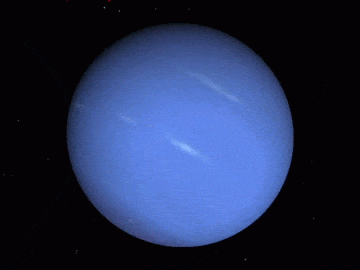Mercury

Being the closest and smallest planet to the sun, Mercury is approximately 4.503 billion years old and has the densest atmosphere out of all the planets within the solar system. It is so close to the sun actually that it "would appear more than three times as large as it does when viewed from Earth" [2] with an average distance of thirty six million miles from the surface of the planet to the Sun. Surprisingly, Mercury isn't the hottest planet within the solar system with its average temperature ranging between -180 degrees celcius to 430 degrees celcius due to the planet having little to no atmosphere to retain heat within its surface. Due to a slow rotation on its axis, one full rotation takes on average 59 Earth days to complete meaning one side of the planet is facing the sun for a much longer duration of time than the other side. Due to having a thin atmosphere mostly composed of hydrogen, oxygen, helium, potassium and sodium (caused by solar winds discussed in 'The Sun' blog), Mercury could therefore not sustain life. Another interesting feature of this planet is the various craters on its surface, more than any other planet in the solar system. [3]
 |
| [3] Mercury's Craters |
References
[1] pinterest.com. [2020]. Hubble Space Telescope Images. [Online] Available at: https://www.pinterest.com/pin/767089749013252025/ [Last Accessed 10/10/2020].
[2] solarsystem.nasa.gov. [2019]. Mercury. [Online] Available at: https://solarsystem.nasa.gov/planets/mercury/overview/ [Last Accessed 11/10/2020].
[3] nasa.gov. [2008]. MESSENGER. [Online] Available at: https://www.nasa.gov/mission_pages/messenger/multimedia/crater_count.html [Last accessed 11/10/2020].
[4] Russell, R. [2010]. Surface of Mercury. [Online] Available at: https://www.windows2universe.org/mercury/Interior_Surface/Surface/surface_overview.html [Last Accessed 11/10/2020].
[5] sciencealert.com. [n.d.]. What is The General Theory of Relativity?. [Online] Available at: https://www.sciencealert.com/general-relativity [Last Accessed 11/10/2020].


Comments
Post a Comment